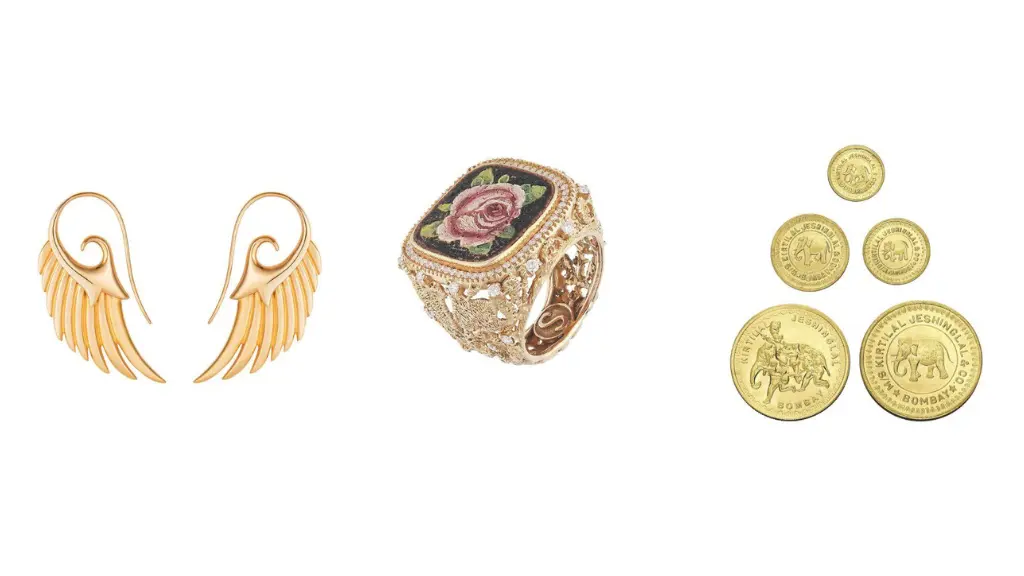Gold has been deeply woven into the fabric of Indian culture for centuries. Beyond its dazzling beauty, this precious metal holds symbolic, economic, and cultural value.
From ancient rituals to modern celebrations, gold has remained an emblem of prosperity, purity, and status. Its significance goes far beyond adornment, reflecting India’s history and traditions.
You May Also Like: How to Dress for Your Dream Job Interview
1. The Roots of Gold in Indian Culture
Gold’s relationship with India traces back over 4,000 years to the Indus Valley Civilization. Archeological findings suggest gold was used in jewelry and trade, signifying wealth and social standing. As Indian society evolved, so did the uses of gold.
Ancient texts like the Vedas refer to gold as a divine metal, representing the purity of fire. It symbolized immortality and the Sun’s energy, making it central to rituals and religious practices.
2. Gold in Religious Rituals
In Hinduism, gold is considered sacred. It plays a pivotal role in religious ceremonies, symbolizing purity, wealth, and divine blessings. During festivals like Diwali and Akshaya Tritiya, buying gold is seen as auspicious, believed to invite prosperity and ward off negativity.
Gold is also used in temples across India, often adorning deities and being offered in devotion. Temples like Tirupati Balaji and Padmanabhaswamy are renowned for their immense gold reserves, reflecting the spiritual and material wealth associated with this metal.
3. Gold in Indian Weddings
An Indian wedding is incomplete without gold. It is a cherished gift passed from one generation to another, symbolizing wealth and security for the bride. Gold jewelry like necklaces, bangles, and earrings forms an integral part of bridal attire.
The tradition of gifting gold during weddings is more than just a display of wealth. It ensures the bride’s financial security in her new home and acts as a form of inheritance. Families often invest years into purchasing and crafting intricate gold jewelry for such occasions.
4. Gold as an Economic Asset
In India, gold has long been a preferred investment. Families view it as a safety net during financial crises. Unlike volatile stock markets, gold’s value remains relatively stable, making it a trusted asset.
During colonial times, gold imports surged as India became one of the largest consumers of the metal. Even today, India’s love for gold continues to influence global markets.
5. Artistic Expressions Through Gold
Indian craftsmanship in gold jewelry is unparalleled. Regions like Rajasthan and Tamil Nadu are famous for their unique designs and techniques. Styles like:
- Kundan (traditional gemstone-studded jewelry),
- Temple jewelry (inspired by deities), and
- Filigree work (intricate wire patterns)
…are globally admired. Each piece of jewelry tells a story, often passed down as a family heirloom.
6. Gold in Modern India
In contemporary India, gold remains a cultural and economic staple. However, its role has evolved. While traditional jewelry is still cherished, modern designs cater to younger generations seeking minimalist and practical styles.
E-commerce has also transformed how Indians buy gold. Digital platforms allow people to purchase gold in small quantities, making it accessible to a broader audience.
7. The Role of Gold in Festivals and Celebrations
Festivals in India often revolve around gold. During Akshaya Tritiya, buying gold is believed to bring eternal prosperity. Similarly, during Dhanteras, preceding Diwali, families invest in gold as an auspicious start to the new year.
These traditions reinforce the metal’s enduring connection to India’s cultural and spiritual identity.
8. The Global Impact of India’s Love for Gold
India accounts for nearly one-fourth of the world’s gold consumption. This demand impacts global markets, shaping prices and influencing mining practices. Indian gold imports also play a significant role in the country’s economy, creating jobs and supporting trade.
9. Challenges and Sustainability
Gold mining and consumption have environmental and ethical implications. In recent years, there has been growing awareness about responsible sourcing. Indian jewelers are increasingly adopting sustainable practices, ensuring that their gold is mined ethically and with minimal environmental harm.
10. The Symbolism of Gold in Indian Culture
Gold is more than just a metal in India—it’s a symbol of life’s milestones, from births and weddings to festivals and religious events. It reflects both material wealth and spiritual well-being.
The allure of gold continues to adapt with the times, balancing its traditional significance with modern sensibilities. Its legacy remains firmly rooted in Indian society, evolving yet never losing its luster.
Conclusion
Gold holds an irreplaceable place in Indian culture. It symbolizes purity, prosperity, and the eternal connection between material and spiritual wealth. From ancient rituals to modern investments, gold reflects the journey of India itself—a nation deeply rooted in tradition yet constantly evolving.
Whether worn as jewelry, offered in devotion, or treasured as an asset, gold’s significance remains timeless in the heart of Indian culture.











[…] You May Also Like: Gold has been An Integral Part of Indian Culture for Centuries. […]